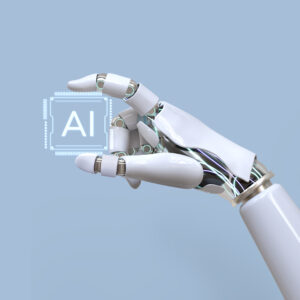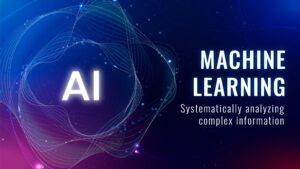Outline of the Article
-
H2: Introduction to AI
-
H3: What is AI?
-
H3: Brief History of AI
-
-
H2: AI in Everyday Life
-
H3: AI in Smartphones
-
H3: AI in Home Automation
-
H3: AI in Transportation
-
-
H2: AI in Business and Workplaces
-
H3: Automating Repetitive Tasks
-
H3: Enhancing Customer Service
-
H3: Improving Data Analysis
-
-
H2: AI in Healthcare
-
H3: Diagnosing Diseases
-
H3: Personalized Treatment Plans
-
H3: Virtual Health Assistants
-
-
H2: AI in Education
-
H3: Personalized Learning Paths
-
H3: Smart Content Creation
-
H3: AI-Powered Tutors
-
-
H2: The Benefits of AI
-
H3: Efficiency and Productivity
-
H3: Cost Reduction
-
H3: Better Decision Making
-
-
H2: The Challenges and Risks of AI
-
H3: Job Displacement
-
H3: Ethical Concerns
-
H3: Data Privacy Issues
-
-
H2: The Future of AI
-
H3: AI and Creativity
-
H3: AI and Human Collaboration
-
H3: AI Regulation and Control
-
-
H2: Conclusion
-
H2: FAQs
-
H3: What industries use AI the most?
-
H3: Can AI replace human jobs entirely?
-
H3: Is AI safe to use?
-
H3: How can someone start learning AI?
-
H3: Will AI become conscious?
-
The Rise of AI: How Artificial Intelligence Is Changing Everything
Introduction to AI
What is AI?
AI, short for Artificial Intelligence, refers to machines or software that can mimic human intelligence. This includes learning from experience, adapting to new inputs, and performing tasks that typically require human cognition—like recognizing speech, making decisions, or translating languages.

Brief History of AI
AI isn’t as new as people think. It actually dates back to the 1950s when computer scientists first began developing programs that could solve puzzles and play games like chess. Over the decades, AI has evolved—from basic rule-based systems to today’s powerful deep learning models that can beat world champions or generate realistic human voices.

AI in Everyday Life
AI in Smartphones
Ever asked Siri a question or used Google Assistant? That’s AI at work. AI helps smartphones understand voice commands, predict text inputs, and even organize your photos based on faces and locations.
AI in Home Automation
From smart thermostats that learn your routine to AI-powered vacuum cleaners that map your home, AI is revolutionizing how we interact with our living spaces. It’s like having a digital butler who never sleeps.
AI in Transportation
Self-driving cars are one of the most exciting uses of AI. Using cameras, sensors, and algorithms, these vehicles can make decisions in real-time. Even GPS systems today use AI to suggest the fastest routes based on traffic conditions.
AI in Business and Workplaces
Automating Repetitive Tasks
AI excels at handling tasks that are dull, repetitive, or time-consuming. Think of AI-powered bots that can handle scheduling, data entry, or even invoice processing—freeing up human workers for more strategic tasks.
Enhancing Customer Service
Ever chatted with a “customer service rep” on a website and later realized it was a bot? That’s AI in action. AI chatbots can answer common questions, process refunds, and handle bookings—all without a human agent.
Improving Data Analysis
Big data is overwhelming without AI. Businesses use AI to crunch massive datasets and find trends, make predictions, or even detect fraud. It’s like having a super-analyst who never sleeps or makes typos.
AI in Healthcare
Diagnosing Diseases
AI algorithms can analyze X-rays, MRIs, or pathology slides faster—and sometimes more accurately—than human doctors. It’s like having a second pair of eyes with superhuman precision.
Personalized Treatment Plans
AI doesn’t just diagnose; it can suggest treatments tailored to your unique genetics or medical history. This customization leads to better outcomes and fewer side effects.
Virtual Health Assistants
These AI systems can monitor your health 24/7, remind you to take medications, and even alert doctors if something’s wrong. Talk about having a digital nurse in your pocket.
AI in Education
Personalized Learning Paths
No two students are the same. AI helps by customizing learning experiences—identifying strengths and weaknesses and adjusting the curriculum in real time.
Smart Content Creation
AI can automatically generate quizzes, summaries, and even entire lessons. This lightens the load for educators and ensures content stays fresh and engaging.
AI-Powered Tutors
Can’t afford a tutor? No problem. AI-driven tutoring systems can guide you through complex topics, offering hints, explanations, and feedback just like a human teacher.
The Benefits of AI
Efficiency and Productivity
AI can work around the clock, doesn’t need breaks, and doesn’t make careless mistakes. This leads to huge efficiency gains in almost every industry.
Cost Reduction
With AI automating processes, companies can cut costs—especially in areas like labor, maintenance, and operations.
Better Decision Making
With access to more data and faster processing, AI helps businesses and individuals make smarter decisions—whether it’s investing in stocks or managing inventory.
The Challenges and Risks of AI
Job Displacement
As AI takes over routine tasks, some jobs will disappear. But don’t panic—new roles will emerge. The key is learning how to work with AI, not against it.
Ethical Concerns
Should AI be allowed to make life-or-death decisions, like in military or medical settings? This opens up a whole ethical minefield that society is still grappling with.
Data Privacy Issues
AI needs data—lots of it. But how that data is collected, stored, and used raises serious concerns about privacy and surveillance.
The Future of AI
AI and Creativity
Think AI can’t be creative? Think again. AI is writing music, painting art, and even penning screenplays. It’s challenging our very definition of creativity.
AI and Human Collaboration
Rather than replacing us, AI is here to collaborate. Think of it as a tool that amplifies human abilities, like a digital co-pilot.
AI Regulation and Control
To prevent misuse, governments and organizations are working on AI regulations. These aim to make sure AI is transparent, fair, and aligned with human values.
Conclusion
AI is no longer science fiction—it’s science fact. It’s already all around us, making life easier, businesses smarter, and innovations faster. But like any powerful tool, it comes with responsibilities. The real question isn’t “Will AI take over?” but “How will we shape the future with AI?”
FAQs
1. What industries use AI the most?
Industries like healthcare, finance, retail, automotive, and tech are leading the charge in AI adoption.
2. Can AI replace human jobs entirely?
Not entirely. AI will replace some tasks but also create new roles we haven’t even imagined yet.
3. Is AI safe to use?
Yes—when designed and used responsibly. Like any tech, it depends on how it’s applied.
4. How can someone start learning AI?
Start with online courses, read beginner books on AI, and practice with open-source tools like Python and TensorFlow.
5. Will AI become conscious?
Highly unlikely—current AI mimics intelligence but doesn’t possess self-awareness or consciousness.
Please don’t forget to leave a review.
Disclaimer: The information provided in this article is for educational and informational purposes only. It is not intended as a substitute for professional medical advice, diagnosis, or treatment. Always seek the advice of your physician or other qualified health provider with any questions you may have regarding a medical condition.
- for more exciting news visit-www.com373news.com
- BOOKS written by author-i)love beyond age
Very informative article,
First time ever got to about AI in one place
Good work
Thank you